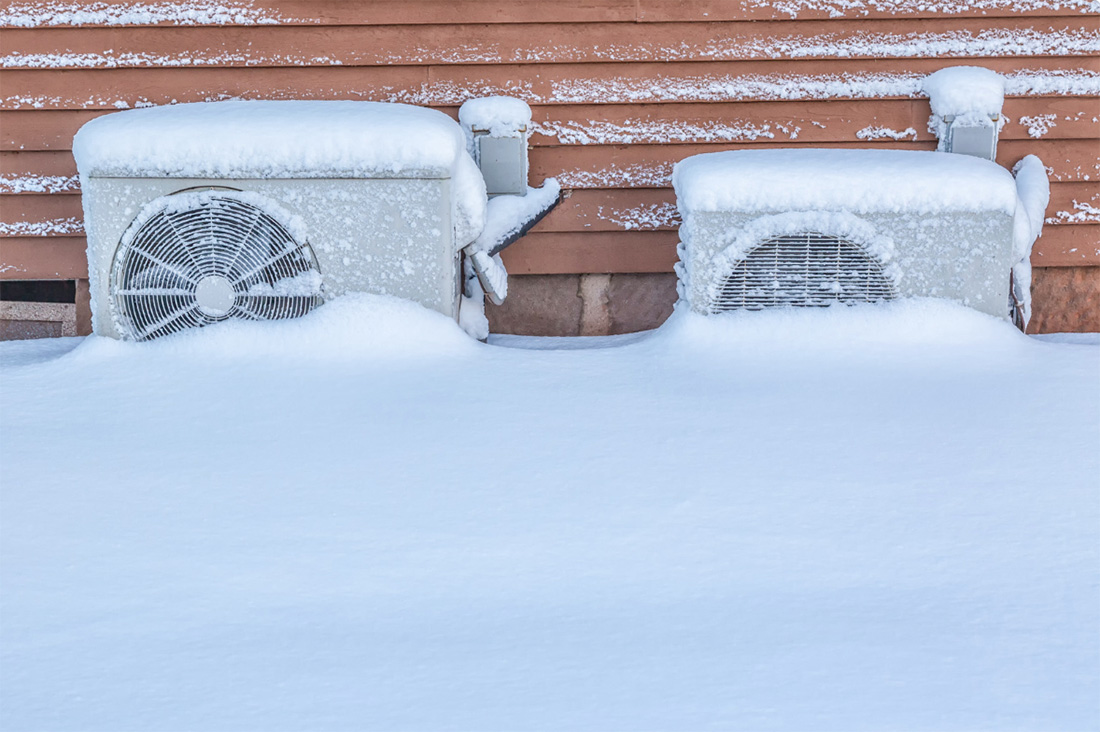
On the first night of winter last month, Denver endured one of the most severe cold snaps on record. Temperatures plummeted an astonishing 30 degrees Fahrenheit in about 15 minutes and remained well below zero overnight. Homeowners who use highly efficient electric heat pumps for home heating posted photos to social media showing how well these appliances performed in keeping their living spaces warm and comfortable — including in homes more than 120 years old!
All across cold-climate states in the U.S., similar situations unfolded during the severe winter storm that hit the week before Christmas 2022. Bitterly cold temperatures lingered for days, but homeowners with cold-climate heat pumps reported smashing success stories. In Minneapolis, a homeowner who’d replaced his gas furnace recently with a new electric cold-climate air source heat pump reported no problems keeping his 1940s-era home warm throughout the deep freeze. In Michigan, homeowner Robert Hayes reported his story on social media, telling how he defied critics by installing a heat pump, despite warnings that it wouldn’t work in extreme cold. His heat pump withstood days well below freezing — without any kind of heating back up. Similar experiences were reported from homeowners and renters with heat pumps in New York City.
This is a testament to the ability of existing cold-climate heat pump technology to handle these types of extreme winter conditions. They passed an important test last month, and will prove to more homeowners interested in making the switch to a heat pump that these highly efficient electric appliances can be trusted to keep their living spaces comfortable when it’s really cold outside.
In response to growing consumer demand, new technology is also shattering expectations of cold-climate heat pumps’ capabilities.
- The U.S. Department of Energy is currently conducting a Cold-Climate Heat Pump Challenge. In 2022, heat pump manufacturer Lennox was the first company to complete it and has developed an air-source model that delivers 100% heating at -15 degrees, and 70- to 80% heating at -23 degrees. The company hopes to bring the product to markets in 2024. Manufacturer Trane is field-testing its own model of cold-climate heat pump as part of the DOE challenge.
- Other types of heat pump technology are being adapted for cold climates. Manufacturers Johnson Controls and SpacePak produce a mini-split system and air-to-water system, respectively, that work effectively in extremely cold conditions. SpacePak’s system performs well at -22 degrees.
Heat pumps deliver additional benefits, too. Their widespread use could help avoid future power shortages during winter storms, because current models of electric heat pumps are three to five times more efficient than typical gas and electric resistance equipment for heating water and indoor spaces. This helps avoid massive spikes of energy demand that can overload grids, causing outages or rolling blackouts.
Heat pumps can also be an effective way to save money on utility bills—which is of paramount importance this winter, because households that rely on gas heating have been hammered by soaring bills thanks to skyrocketing gas prices. Households are reporting spending 2-4 times on their monthly bills thanks to fuel prices that were 400-600% higher in December 2022 than a year ago. RMI released data last fall that showed that in cities across the U.S., all-electric homes save money on utility bills. Their analysis found annual savings on bills of $50-$1,000 for households in all-electric homes, compared with homes that rely on gas. Heat pumps also slash climate pollution in every corner of the U.S.; RMI’s analysis found that all-electric homes result in substantially lower greenhouse gas emissions over a 15-year period.
Clean heating (and cooling, since it will be summer again before you know it – we promise!) are necessary to provide every American household a better quality of life while bolstering our resilience for climate change and accelerating our transition to renewable energy. In addition to ensuring all new construction is all-electric, we need to get more heat pumps into homes and buildings that lack them. The Inflation Reduction Act’s incentives will help. Some are starting to roll out in January, with more expected by the end of 2023. Once fully implemented, the tax credits and rebate programs will knock thousands of dollars off the cost of installing a heat pump, a heat pump water heater, or other electrification and weatherization upgrades.
The highest levels of heat pump adoption has historically been in warmer climate areas of the U.S. like the Southeast, Texas, and Southwest. Less than 5% of homes in the Northeast, Midwest, and Mountain West used heat pumps in 2020, according to the Energy Information Administration. That’s changing fast – and it’s a trend that will continue to accelerate as heat pumps keep passing the tests posed by extreme winter storms.
